
The Samlesbury witches were three women from the Lancashire village of Samlesbury – Jane Southworth, Jennet Bierley, and Ellen Bierley – accused by a 14-year-old girl, Grace Sowerbutts, of practising witchcraft. Their trial at Lancaster Assizes in England on 19 August 1612 was one in a series of witch trials held there over two days, among the most famous in English history.[2] The trials were unusual for England at that time in two respects: Thomas Potts, the clerk to the court, published the proceedings in his The Wonderfull Discoverie of Witches in the Countie of Lancaster; and the number of the accused found guilty and hanged was unusually high, ten at Lancaster and another at York.[3] However, all three of the Samlesbury women were acquitted.
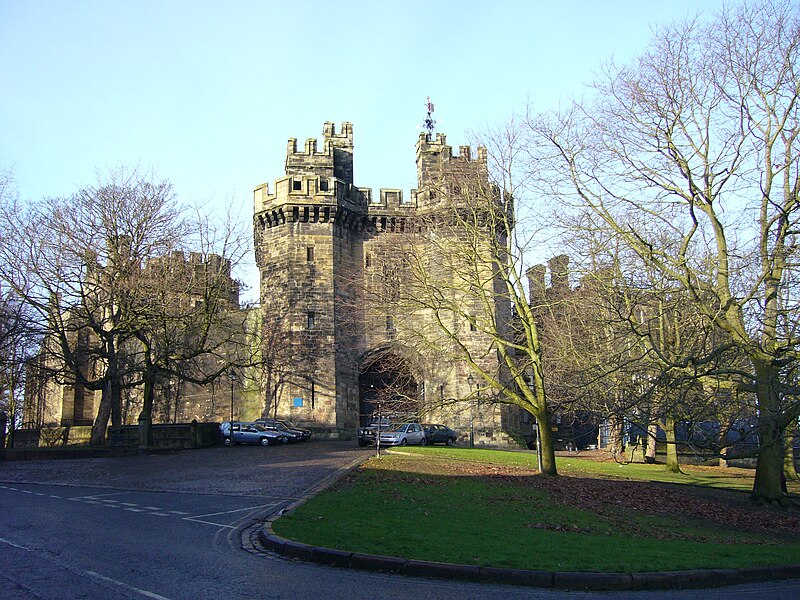
The charges against the women included child murder and cannibalism. In contrast, the others tried at the same assizes, who included the Pendle witches, were accused of maleficium – causing harm by witchcraft.[4] The case against the three women collapsed "spectacularly" when the chief prosecution witness, Grace Sowerbutts, was exposed by the trial judge to be "the perjuring tool of a Catholic priest".[1]
Many historians, notably Hugh Trevor-Roper, have suggested that the witch trials of the 16th and 17th centuries were a consequence of the religious struggles of the period, with both the Catholic Church and the Protestant Church determined to stamp out what they regarded as heresy.[5] The trial of the Samlesbury witches is perhaps one clear example of that trend; it has been described as "largely a piece of anti-Catholic propaganda",[6] and even as a show-trial, to demonstrate that Lancashire, considered at that time to be a wild and lawless region, was being purged not only of witches but also of "popish plotters" (i.e. Catholics).[7]
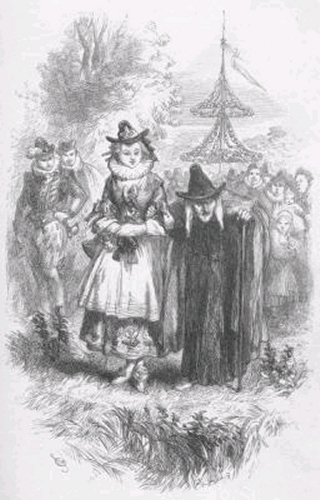
King James I, who came to the English throne from Scotland in 1603, had a keen interest in witchcraft. By the early 1590s, he was convinced that Scottish witches were plotting against him.[8] His 1597 book, Daemonologie, instructed his followers that they must denounce and prosecute any supporters or practitioners of witchcraft. In 1604, the year following James's accession to the English throne, a new witchcraft law was enacted, "An Act against Conjuration, Witchcraft and dealing with evil and wicked spirits", imposing the death penalty for causing harm by the use of magic or the exhumation of corpses for magical purposes.[9] James was, however, sceptical of the evidence presented in witch trials, even to the extent of personally exposing discrepancies in the testimonies presented against some accused witches.[10]

The accused witches lived in Lancashire, an English county which, at the end of the 16th century, was regarded by the authorities as a wild and lawless region, "fabled for its theft, violence and sexual laxity, where the church was honoured without much understanding of its doctrines by the common people".[11] Since the death of Queen Mary and the accession to the throne of her half-sister Elizabeth in 1558, Catholic priests had been forced into hiding, but in remote areas like Lancashire they continued to celebrate mass in secret.[12] In early 1612, the year of the trials, each justice of the peace (JP) in Lancashire was ordered to compile a list of the recusants in their area—those who refused to attend the services of the Church of England, a criminal offence at that time.[13]
Southworth family
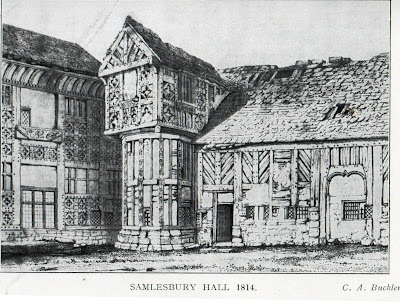
Investigations
On 21 March 1612, Alizon Device, who lived just outside the Lancashire village of Fence, near Pendle Hill,[18] encountered John Law, a pedlar from Halifax. She asked him for some pins, which he refused to give to her,[19] and a few minutes later Law suffered a stroke, for which he blamed Alizon.[20] Along with her mother Elizabeth and her brother James, Alizon was summoned to appear before local magistrate Roger Nowell on 30 March 1612. Based on the evidence and confessions he obtained, Nowell committed Alizon and ten others to Lancaster Gaol to be tried at the next assizes for maleficium, causing harm by witchcraft.[21]
Other Lancashire magistrates learned of Nowell's discovery of witchcraft in the county, and on 15 April 1612 JP Robert Holden began investigations in his own area of Samlesbury.[14] As a result, eight individuals were committed to Lancaster Assizes, three of whom – Jane Southworth, Jennet Bierley, and Ellen Bierley – were accused of practising witchcraft on Grace Sowerbutts, Jennet's grand-daughter and Ellen's niece.[22]

Trial
The trial was held on 19 August 1612 before Sir Edward Bromley,[23] a judge seeking promotion to a circuit nearer London, and who may therefore have been keen to impress King James, the head of the judiciary.[24] Before the trial began, Bromley ordered the release of five of the eight defendants from Samlesbury, with a warning about their future conduct.[22] The remainder – Jane Southworth, Jennet Bierley, and Ellen Bierley – were accused of using "diverse devillish and wicked Arts, called Witchcrafts, Inchauntments, Charmes, and Sorceries, in and upon one Grace Sowerbutts", to which they pleaded not guilty.[25] Fourteen-year-old Grace was the chief prosecution witness.[26]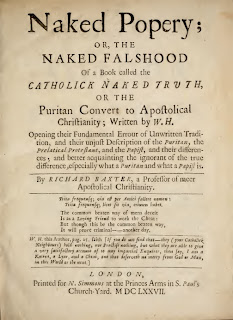
Grace was the first to give evidence. In her statement she claimed that both her grandmother and aunt, Jennet and Ellen Bierley, were able to transform themselves into dogs and that they had "haunted and vexed her" for years.[27] She further alleged that they had transported her to the top of a hayrick by her hair, and on another occasion had tried to persuade her to drown herself. According to Grace, her relatives had taken her to the house of Thomas Walshman and his wife, from whom they had stolen a baby to suck its blood. Grace claimed that the child died the following night, and that after its burial at Samlesbury Church Ellen and Jennet dug up the body and took it home, where they cooked and ate some of it and used the rest to make an ointment that enabled them to change themselves into other shapes.[28]

Grace also alleged that her grandmother and aunt, with Jane Southworth, attended sabbats held every Thursday and Sunday night at Red Bank, on the north shore of the River Ribble. At those secret meetings they met with "foure black things, going upright, and yet not like men in the face", with whom they ate, danced, and had sex.[29]

Thomas Walshman, the father of the baby allegedly killed and eaten by the accused, was the next to give evidence. He confirmed that his child had died of unknown causes at about one year old. He added that Grace Sowerbutts was discovered lying as if dead in his father's barn on about 15 April, and did not recover until the following day.[30] Two other witnesses, John Singleton and William Alker, confirmed that Sir John Southworth, Jane Southworth's father-in-law, had been reluctant to pass the house where his son lived, as he believed Jane to be an "evil woman, and a Witch".[31]
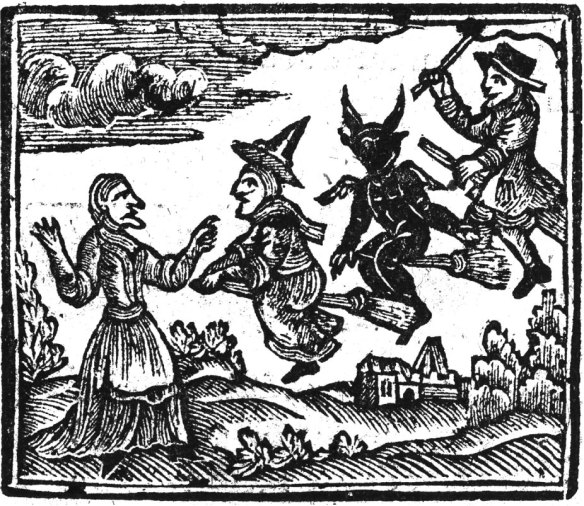
Examinations
Thomas Potts, the clerk to the Lancaster Assizes, records that after hearing the evidence many of those in court were persuaded of the accused's guilt. On being asked by the judge what answer they could make to the charges laid against them, Potts reports that they "humbly fell upon their knees with weeping teares", and "desired him [Bromley] for Gods cause to examine Grace Sowerbutts". Immediately "the countenance of this Grace Sowerbutts changed"; the witnesses "began to quarrel and accuse one another", and eventually admitted that Grace had been coached in her story by a Catholic priest they called Thompson. Bromley then committed the girl to be examined by two JPs, William Leigh and Edward Chisnal.[32] Under questioning Grace readily admitted that her story was untrue, and said she had been told what to say by Jane Southworth's uncle,[7] Christopher Southworth aka Thompson, a Jesuit priest who was in hiding in the Samlesbury area;[33] Southworth was the chaplain at Samlesbury Hall,[34] and Jane Southworth's uncle by marriage.[17] Leigh and Chisnal questioned the three accused women in an attempt to discover why Southworth might have fabricated evidence against them, but none could offer any reason other than that each of them "goeth to the [Anglican] Church".[35]
After the statements had been read out in court Bromley ordered the jury to find the defendants not guilty, stating that:
Potts concludes his account of the trial with the words: "Thus were these poore Innocent creatures, by the great care and paines of this honourable Judge, delivered from the danger of this Conspiracie; this bloudie practise of the Priest laid open".[37]God hath delivered you beyond expectation, I pray God you may use this mercie and favour well; and take heed you fall not hereafter: And so the court doth order that you shall be delivered.[36]
The Wonderfull Discoverie of Witches in the Countie of Lancaster

In his introduction to the trial, Potts writes; "Thus have we for a time left the Graund Witches of the Forrest of Pendle, to the good consideration of a very sufficient jury."[23] Bromley had by then heard the cases against the three Pendle witches who had confessed to their guilt, but he had yet to deal with the others, who maintained their innocence. He knew that the only testimony against them would come from a nine-year-old girl, and that King James had cautioned judges to examine carefully the evidence presented against accused witches, warning against credulity.[7] In his conclusion to the account of the trial, Potts says that it was interposed in the expected sequence "by special order and commandment",[41] presumably of the trial judges. After having convicted and sentenced to death three witches, Bromley may have been keen to avoid any suspicion of credulity by presenting his "masterful exposure" of the evidence presented by Grace Sowerbutts, before turning his attention back to the remainder of the Pendle witches.[7]
Modern interpretation
Potts declares that "this Countie of Lancashire ... now may lawfully bee said to abound asmuch in Witches of divers kinds as Seminaries, Jesuites, and Papists",[42] and describes the three accused women as having once been "obstinate Papists, and now came to Church".[43] The judges would certainly have been keen to be regarded by King James, the head of the judiciary, as having dealt resolutely with Catholic recusants as well as with witchcraft, the "two big threats to Jacobean order in Lancashire".[44] Samlesbury Hall, the family home of the Southworths, was suspected by the authorities of being a refuge for Catholic priests, and it was under secret government surveillance for some considerable time before the trial of 1612.[6] It may be that JP Robert Holden was at least partially motivated in his investigations by a desire to "smoke out its Jesuit chaplain", Christopher Southworth.[34]

The English experience of witchcraft was somewhat different from the European one, with only one really mass witchhunt, that of Matthew Hopkins in East Anglia during 1645. That one incident accounted for more than 20% of the number of witches it is estimated were executed in England between the early 15th and mid-18th century, fewer than 500.[45] The English legal system also differed significantly from the inquisitorial model used in Europe, requiring members of the public to accuse their neighbours of some crime, and for the case to be decided by a jury of their peers. English witch trials of the period "revolved around popular beliefs, according to which the crime of witchcraft was one of ... evil-doing", for which tangible evidence had to be provided.[46]

Potts devotes several pages to a fairly detailed criticism of the evidence presented in Grace Sowerbutts' statement, giving an insight into the discrepancies that existed during the early 17th century between the Protestant establishment's view of witchcraft and the beliefs of the common people, who may have been influenced by the more continental views of Catholic priests such as Christopher Southworth.[48] Unlike their European counterparts, the English Protestant elite believed that witches kept familiars, or companion animals, and so it was not considered credible that the Samlesbury witches had none.[46] Grace's story of the sabbat, too, was unfamiliar to the English at that time, although belief in such secret gatherings of witches was widespread in Europe.[49] Most demonologists of the period, including King James, held that only God could perform miracles, and that he had not given the power to go against the laws of nature to those in league with the Devil.[47] Hence Potts dismisses Sowerbutts' claim that Jennet Bierley transformed herself into a black dog with the comment "I would know by what means any Priest can maintaine this point of Evidence". He equally lightly dismisses Grace's account of the sabbat she claimed to have attended, where she met with "foure black things ... not like men in the face", with the comment that "The Seminarie [priest] mistakes the face for the feete: For Chattox [one of the Pendle witches] and all her fellow witches agree, the Devill is cloven-footed: but Fancie [Chattox's familiar] had a very good face, and was a proper man."[50]

It is perhaps unlikely that the accused women would have failed to draw the examining magistrate's attention to their suspicions concerning Grace Sowerbutts' motivations when first examined, only to do so at the very end of their trial when asked by the judge if they had anything to say in their defence. The trial of the Samlesbury witches in 1612 may have been "largely a piece of anti-Catholic propaganda",[6] or even a "show-trial",[22] the purpose of which was to demonstrate that Lancashire was being purged not only of witches, but also of "popish plotters".[7]
Aftermath
Bromley achieved his desired promotion to the Midlands Circuit in 1616. Potts was given the keepership of Skalme Park by King James in 1615, to breed and train the king's hounds. In 1618, he was given responsibility for "collecting the forfeitures on the laws concerning sewers, for twenty-one years".[51] Jane Southworth's eldest son, Thomas, eventually inherited his grandfather's estate of Samlesbury Hall.[17]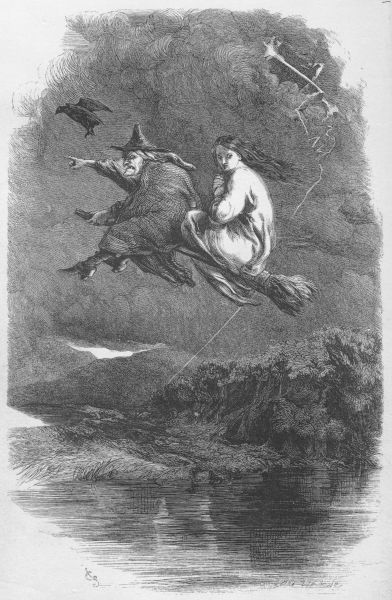
Taken from: http://en.wikipedia.org/wiki/Samlesbury_witches [19.08.2013]
=======================================================================
Salem witch trials

The Salem witch trials were a series of hearings and prosecutions of people accused of witchcraft in colonial Massachusetts, between February 1692 and May 1693. Despite being generally known as the Salem witch trials, the preliminary hearings in 1692 were conducted in a variety of towns across the province: Salem Village (now Danvers), Ipswich, Andover and Salem Town.

The most infamous trials were conducted by the Court of Oyer and Terminer in 1692 in Salem Town. One contemporary writer summed the results of the trials thus:
At least five more of the accused died in prison."And now Nineteen persons having been hang'd, and one prest to death, and Eight more condemned, in all Twenty and Eight, of which above a third part were Members of some of the Churches of N. England, and more than half of them of a good Conversation in general, and not one clear'd; about Fifty having confest themselves to be Witches, of which not one Executed; above an Hundred and Fifty in Prison, and Two Hundred more acccused; the Special Commision of Oyer and Terminer comes to a period,..."
"When I put an end to the Court there ware at least fifty persons in prision in great misery by reason of the extream cold and their poverty, most of them having only spectre evidence against them and their mittimusses being defective, I caused some of them to be lettout upon bayle and put the Judges upon consideration of a way to reliefe others and to prevent them from perishing in prision, upon which some of them were convinced and acknowledged that their former proceedings were too violent and not grounded upon a right foundation ... The stop put to the first method of proceedings hath dissipated the blak cloud that threatened this Province with destruccion;..."— Governor William Phips, February 21st, 1693[2]
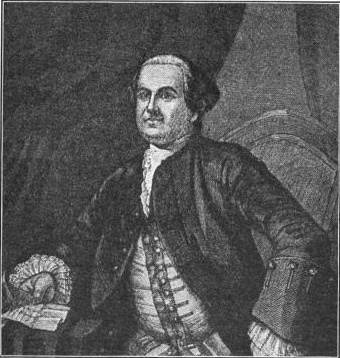
The episode is one of the most notorious cases of mass hysteria, and has been used in political rhetoric and popular literature as a vivid cautionary tale about the dangers of isolationism, religious extremism, false accusations and lapses in due process.[3] It was not unique, being an American example of the much larger phenomenon of witch trials in the Early Modern period, but many have considered the lasting impressions from the trials to have been highly influential in subsequent American history.
"More than once it has been said, too, that the Salem witchcraft was the rock on which the theocracy shattered."— George Lincoln Burr pg. 197[4]
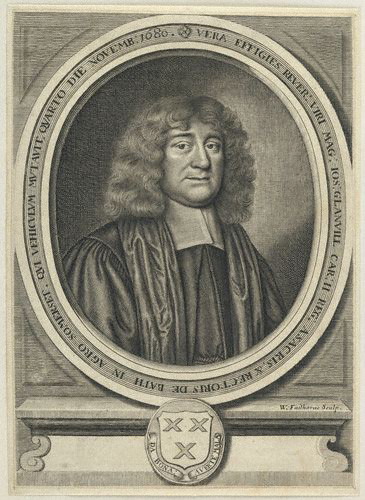

Men and women in Salem believed that all the misfortunes were attributed to the work of the devil; when things like infant death, crop failures or friction among the congregation occurred, the supernatural was blamed. Because of the unusual size of the outbreak of witchcraft accusations, various aspects of the historical context of this episode have been considered as specific contributing factors.
Witchcraft in New England

Historian Clarence F. Jewett included a list of other people executed in New England in (Ticknor and Company, 1881). He wrote,
The following is the list of the 12 persons who were executed for witchcraft in New England before 1692, when 24 other persons were executed at Salem, whose names are well known. It is possible that the list is not complete ; but I have included all of which I have any knowledge, and with such details as to names and dates as could be ascertained : — 1647, — "Woman of Windsor," Connecticut (name unknown)[later identified as Alice Young], at Hartford. 1648, — Margaret Jones, of Charlestown, at Boston. 1648,— Mary Johnson, at Hartford. 1650? — Henry Lake's wife, of Dorchester. 1650?—Mrs. Kendall, of Cambridge. 1651, — Mary Parsons, of Springfield, at Boston. 1651, — Goodwife Bassett, at Fairfield, Conn. 1653,—Goodwife Knap, at Hartford. 1656, — Ann Hibbins, at Boston. 1662, — Goodman Greensmith, at Hartford. 1662,— Goodwife Greensmith, at Hartford. 1688,— Goody Glover, at Boston."[8]
Political context

The original 1629 Royal Charter of the Massachusetts Bay Colony was vacated in 1684,[9] after which King James II installed Sir Edmund Andros as the Governor of the Dominion of New England. Andros was ousted in 1689 after the "Glorious Revolution" in England replaced the Catholic James II with the Protestant co-rulers William and Mary. Simon Bradstreet and Thomas Danforth, the colony's last leaders under the old charter, resumed their posts as governor and deputy governor, but lacked constitutional authority to rule, because the old charter had been vacated. At the same time tensions erupted between the English colonists settling in "the Eastward" (the present-day coast of Maine) and the French-supported Wabanaki Indians in what came to be known as King William's War. This was only 13 years after the devastating King Philip's War with the Wampanoag and other indigenous tribes in southern and western New England. In October 1690, Sir William Phips led an unsuccessful attack on Quebec. Many English settlements along the coast were repeatedly attacked by Native Americans between 1689 and 1692, leading to the abandonment of some of the settlements, and bringing a flood of refugees into areas like Essex County.
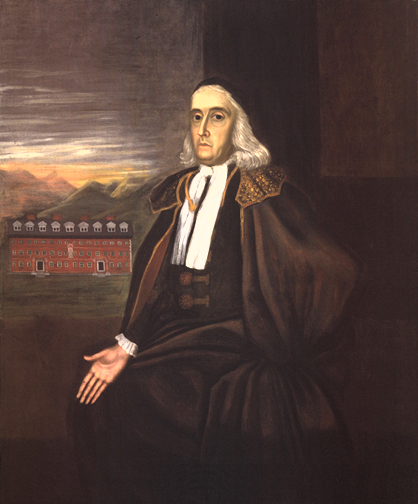
A new charter for the enlarged Province of Massachusetts Bay was given final approval in England on October 16, 1691.[10] News of the appointment of Phips as the new governor reached Boston in late January[11] and a copy of the new charter arrived in Boston on February 8, 1692.[12] Phips arrived in Boston on May 14,[13] and was sworn in as governor two days later, along with Lieutenant Governor William Stoughton.[14] One of the first orders of business for the new governor and council on May 27, 1692, was the formal nomination of county justices of the peace, sheriffs, and the commission of a Special Court of Oyer and Terminer to handle the large numbers of people who were "thronging" the jails.[15]
Boyer and Nissenbaum have postulated that without a valid charter, there was no legitimate form of government to try capital cases until Phips arrived with the new charter.[16] This has been disputed by David Konig, who points out that between charters, according to the Records of the Court of Assistants, a group of 14 pirates were tried and condemned on January 27, 1690, for acts of piracy and murder committed in August and October 1689.[17]
Local context
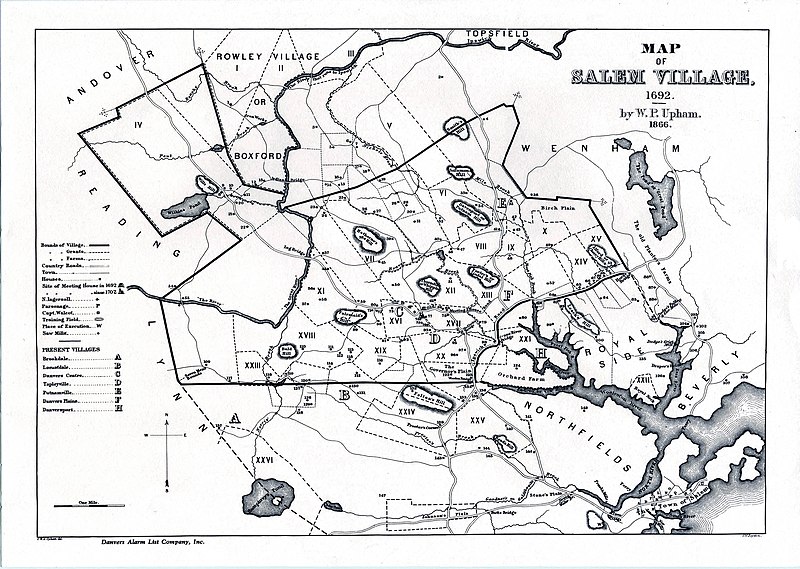
Salem Village (present-day Danvers, Massachusetts) was known for its many internal disputes, and for disputes between the village and Salem Town (present-day Salem). Arguments about property lines, grazing rights, and church privileges were rife, and the population was seen as "quarrelsome" by its neighbors. In 1672, the villagers had voted to hire a minister of their own, apart from Salem Town. Their first two ministers, James Bayley (1673–79) and George Burroughs (1680–83), stayed only a few years each, departing after the congregation failed to pay their full rate. Despite the ministers' rights being upheld by the General Court and the parish admonished, they had each chosen to leave. The third minister, Deodat Lawson (1684–88), had not stayed either, but his departure was prompted by the refusal of the church in Salem to ordain him and not over issues with the congregation.
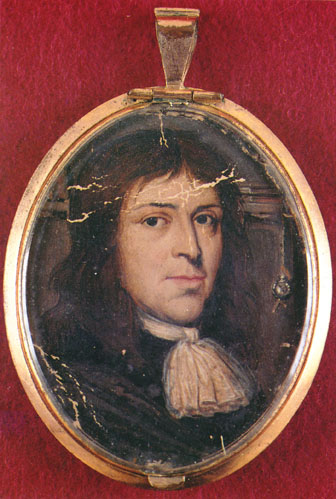
There was disagreement about the choice of Samuel Parris as Salem Village's first ordained minister. On June 18, 1689, the villagers agreed to hire Parris for ₤66 annually, "one third part in money and the other two third parts in provisions" and use of the parsonage.[18] On October 10, 1689, however, they voted to grant him the deed to the parsonage and two acres (0.8 hectares) of land,[19] despite a vote by the inhabitants in 1681 stating, "it shall not be lawful for the inhabitants of this village to convey the houses or lands or any other concerns belonging to the Ministry to any particular persons or person: not for any cause by vote or other ways".[20] Though the prior ministers' fates and the level of contention in the village were valid reasons for caution in accepting the position, Reverend Parris only increased the village's divisions by delaying accepting his position in Salem Village. Neither had he any gift for settling his new parishioners' disputes: by deliberately seeking out "iniquitous behavior" in his congregation and making church members in good standing suffer public penance for small infractions, he made a significant contribution toward the tension within the village, and the bickering in the village continued to grow unabated. In this atmosphere, serious conflict may have been inevitable.[21]
Religious context

Prior to the constitutional turmoil of the 1680s, Massachusetts government had been dominated by conservative Puritan secular leaders. Puritans, influenced by Calvinism, opposed many of the traditions of the Protestant Church of England, including the Book of Common Prayer, the use of priestly vestments (cap and gown) during services, the use of the Holy Cross during baptism, and kneeling during the sacrament, all of which constituted "popery". Hostile policies of King Charles I and active repression by Anglican church officials of these dissenting non-Anglican views accelerated in the 1620s and 1630s, resulting in a major migration of Puritans and other religious minorities to North America. These migrants established several colonies in New England, of which the Massachusetts Bay Colony was the largest and most economically important. Self-governance came naturally to them, since building a society based on their religious beliefs was one of their goals. Colonial leaders were elected by the freemen of the colony, who were those individuals who had had their religious experiences formally examined, and had been admitted to one of the colony's Puritan congregations. The colonial leadership were prominent members of their congregations, and regularly consulted with the local ministers on issues facing the colony.
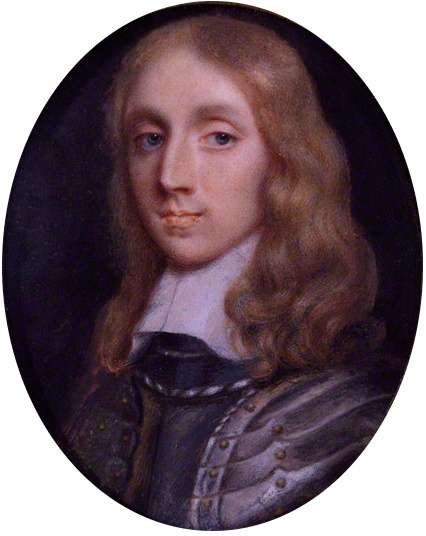
In the early 1640s, England erupted in civil war. The Puritan-dominated Parliamentarians emerged victorious, and Charles I was executed in 1649. Parliamentary rule was supplanted by the Proctectorate of Oliver Cromwell in 1653, but the failure of his successor Richard Cromwell led to restoration of the old order under Charles II. Emigration to New England slowed significantly in these years, and a successful merchant class began to develop that was less religiously motivated than the colony's early settlers.

In Salem Village, as in the colony at large, life was governed by the precepts of the Church, which was Calvinist in the extreme[by whom?]. Music, dancing, celebration of holidays such as Christmas and Easter, were absolutely forbidden,[22] as they supposedly had roots in Paganism. The only music allowed at all was the unaccompanied singing of hymns—the folk songs of the period glorified human love and nature, and were therefore against God. Toys and especially dolls were also forbidden, and were considered a frivolous waste of time.[23] The only schooling for children was in religious doctrine and the Bible[not in citation given], and all the villagers were expected to go to the meeting house for three-hour sermons every Wednesday and Sunday. Village life revolved around the meeting house, and those celebrations permitted, such as those celebrating the harvest, were centered there.[24]

Prior to 1692, there had been rumors of witchcraft in villages neighboring Salem Village and other towns. Cotton Mather, a minister of Boston's North Church (not to be confused with the later Anglican North Church of Paul Revere fame) was a prolific publisher of pamphlets and a firm believer in witchcraft. In his book Memorable Providences Relating to Witchcrafts and Possessions (1689), Mather describes his "oracular observations" and how "stupendous witchcraft"[25] had affected the children of Boston mason John Goodwin. Mather illustrates how the Goodwins' eldest child had been tempted by the devil and stole linen from the washerwoman Mary Glover. Glover was a miserable old woman whom her husband often described as a witch; this is perhaps why Glover was accused of casting spells on the Goodwin children. After the event, four out of six Goodwin children began to experience strange fits or what some people referred to as "the disease of astonishment".[25] The manifestations attributed to the disease quickly became associated with witchcraft. These symptoms were things like neck and back pains, tongues being drawn from their throats, and loud random outcries; other symptoms included having no control over their bodies such as becoming limber, flapping their arms like birds, or trying to harm others as well as themselves. These symptoms would fuel the craze of 1692.
Timeline
Initial events


The first three people accused and arrested for allegedly afflicting Betty Parris, Abigail Williams, 12-year-old Ann Putnam, Jr., and Elizabeth Hubbard were Sarah Good, Sarah Osborne and Tituba. The accusation by Ann Putnam Jr. is seen by historians as evidence that a family feud may have been a major cause of the Witch Trials. Salem was the home of a vicious rivalry between the Putnam and Porter families. The people of Salem were all engaged in this rivalry. Salem citizens would often engage in heated debates that would escalate into full fledged fighting, based solely on their opinion regarding this feud.[28]
Sarah Good was a homeless beggar and known to beg for food and shelter from neighbors. She was accused of witchcraft because of her appalling reputation. At her trial, Good was accused of rejecting the puritanical expectations of self-control and discipline when she chose to torment and “scorn [children] instead of leading them towards the path of salvation".[29]
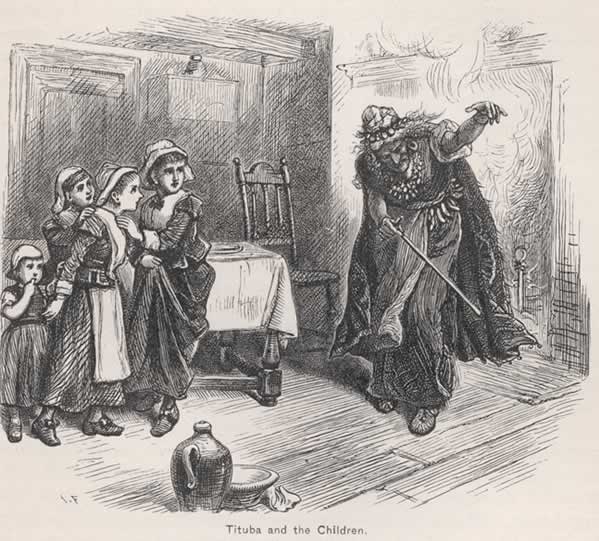
Sarah Osborne rarely attended church meetings. She was accused of witchcraft because the puritans believed that Osborne had her own self-interests in mind following her remarriage to an indentured servant. The citizens of the town of Salem also found it distasteful when she attempted to control her son's inheritance from her previous marriage.

Tituba, as a slave of a different ethnicity than the Puritans, was a target for accusations. She was accused of attracting young girls like Abigail Williams and Betty Parris with enchanting stories from Malleus Maleficarum. These tales about sexual encounters with demons, swaying the minds of men, and fortune telling stimulated the imaginations of young girls and made Tituba an obvious target of accusations.[30]

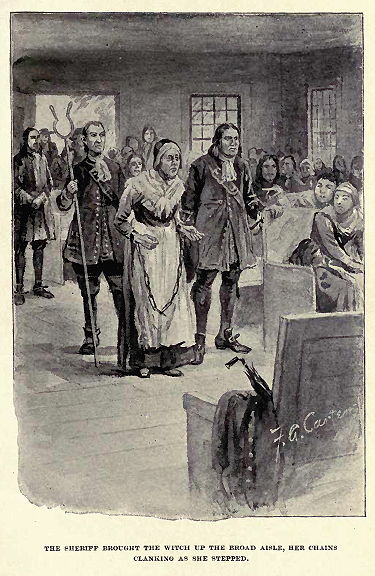
All of these outcast women fit the description of the "usual suspects" for witchcraft accusations, and nobody defended them. These women were brought before the local magistrates on the complaint of witchcraft and interrogated for several days, starting on March 1, 1692, then sent to jail.[31] Other accusations followed in March: Martha Corey, Dorothy Good and Rebecca Nurse in Salem Village, and Rachel Clinton in nearby Ipswich. Martha Corey had voiced skepticism about the credibility of the girls' accusations, drawing attention to herself. The charges against her and Rebecca Nurse deeply troubled the community because Martha Corey was a full covenanted member of the Church in Salem Village, as was Rebecca Nurse in the Church in Salem Town. If such upstanding people could be witches, then anybody could be a witch, and church membership was no protection from accusation. Dorothy Good, the daughter of Sarah Good, was only 4 years old, and when questioned by the magistrates her answers were construed as a confession, implicating her mother. In Ipswich, Rachel Clinton was arrested for witchcraft at the end of March[32] on charges unrelated to the afflictions of the girls in Salem Village.

Accusations and examinations before local magistrates

When Sarah Cloyce (Nurse's sister) and Elizabeth (Bassett) Proctor were arrested in April, they were brought before John Hathorne and Jonathan Corwin, not only in their capacity as local magistrates, but as members of the Governor's Council, at a meeting in Salem Town. Present for the examination were Deputy Governor Thomas Danforth, and Assistants Samuel Sewall, Samuel Appleton, James Russell and Isaac Addington. Objections by John Proctor during the proceedings resulted in his arrest that day as well.


Within a week, Giles Corey (Martha's husband, and a covenanted church member in Salem Town), Abigail Hobbs, Bridget Bishop, Mary Warren (a servant in the Proctor household and sometime accuser herself) and Deliverance Hobbs (stepmother of Abigail Hobbs) were arrested and examined. Abigail Hobbs, Mary Warren and Deliverance Hobbs all confessed and began naming additional people as accomplices. More arrests followed: Sarah Wildes, William Hobbs (husband of Deliverance and father of Abigail), Nehemiah Abbott Jr., Mary Eastey (sister of Cloyce and Nurse), Edward Bishop, Jr. and his wife Sarah Bishop, and Mary English, and finally, on April 30, the Reverend George Burroughs, Lydia Dustin, Susannah Martin, Dorcas Hoar, Sarah Morey and Philip English (Mary's husband). Nehemiah Abbott Jr. was released because the accusers agreed he was not the person whose specter had afflicted them. Mary Eastey was released for a few days after her initial arrest because the accusers failed to confirm that it was she who had afflicted them, and then she was rearrested when the accusers reconsidered.
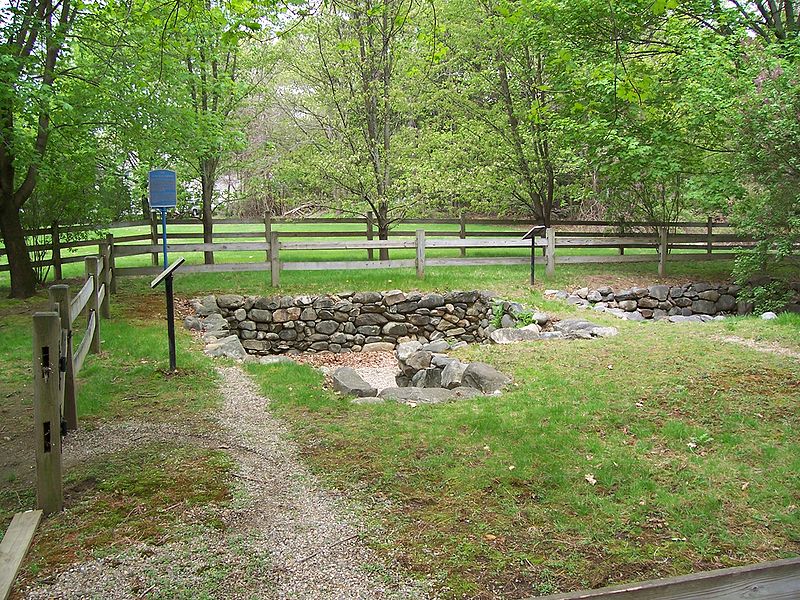
In May, accusations continued to pour in, but some of those named began to evade apprehension. Multiple warrants were issued before John Willard and Elizabeth Colson were apprehended, but George Jacobs Jr. and Daniel Andrews were not caught. Until this point, all the proceedings were still only investigative, but on May 27, 1692, William Phips ordered the establishment of a Special Court of Oyer and Terminer for Suffolk, Essex and Middlesex counties to prosecute the cases of those in jail. Warrants were issued for even more people. Sarah Osborne, one of the first three accused, died in jail on May 10, 1692.

Warrants were issued for 36 more people, with examinations continuing to take place in Salem Village: Sarah Dustin (daughter of Lydia Dustin), Ann Sears, Bethiah Carter Sr. and her daughter Bethiah Carter Jr., George Jacobs, Sr. and his granddaughter Margaret Jacobs, John Willard, Alice Parker, Ann Pudeator, Abigail Soames, George Jacobs, Jr. (son of George Jacobs, Sr. and father of Margaret Jacobs), Daniel Andrew, Rebecca Jacobs (wife of George Jacobs, Jr. and sister of Daniel Andrew), Sarah Buckley and her daughter Mary Witheridge, Elizabeth Colson, Elizabeth Hart, Thomas Farrar, Sr., Roger Toothaker, Sarah Proctor (daughter of John and Elizabeth Proctor), Sarah Bassett (sister-in-law of Elizabeth Proctor), Susannah Roots, Mary DeRich (another sister-in-law of Elizabeth Proctor), Sarah Pease, Elizabeth Cary, Martha Carrier, Elizabeth Fosdick, Wilmot Redd, Sarah Rice, Elizabeth Howe, Capt. John Alden (son of John Alden and Priscilla Mullins of Plymouth Colony), William Proctor (son of John and Elizabeth Proctor), John Flood, Mary Toothaker (wife of Roger Toothaker and sister of Martha Carrier) and her daughter Margaret Toothaker, and Arthur Abbott. When the Court of Oyer and Terminer convened at the end of May, this brought the total number of people in custody to 62.[33]
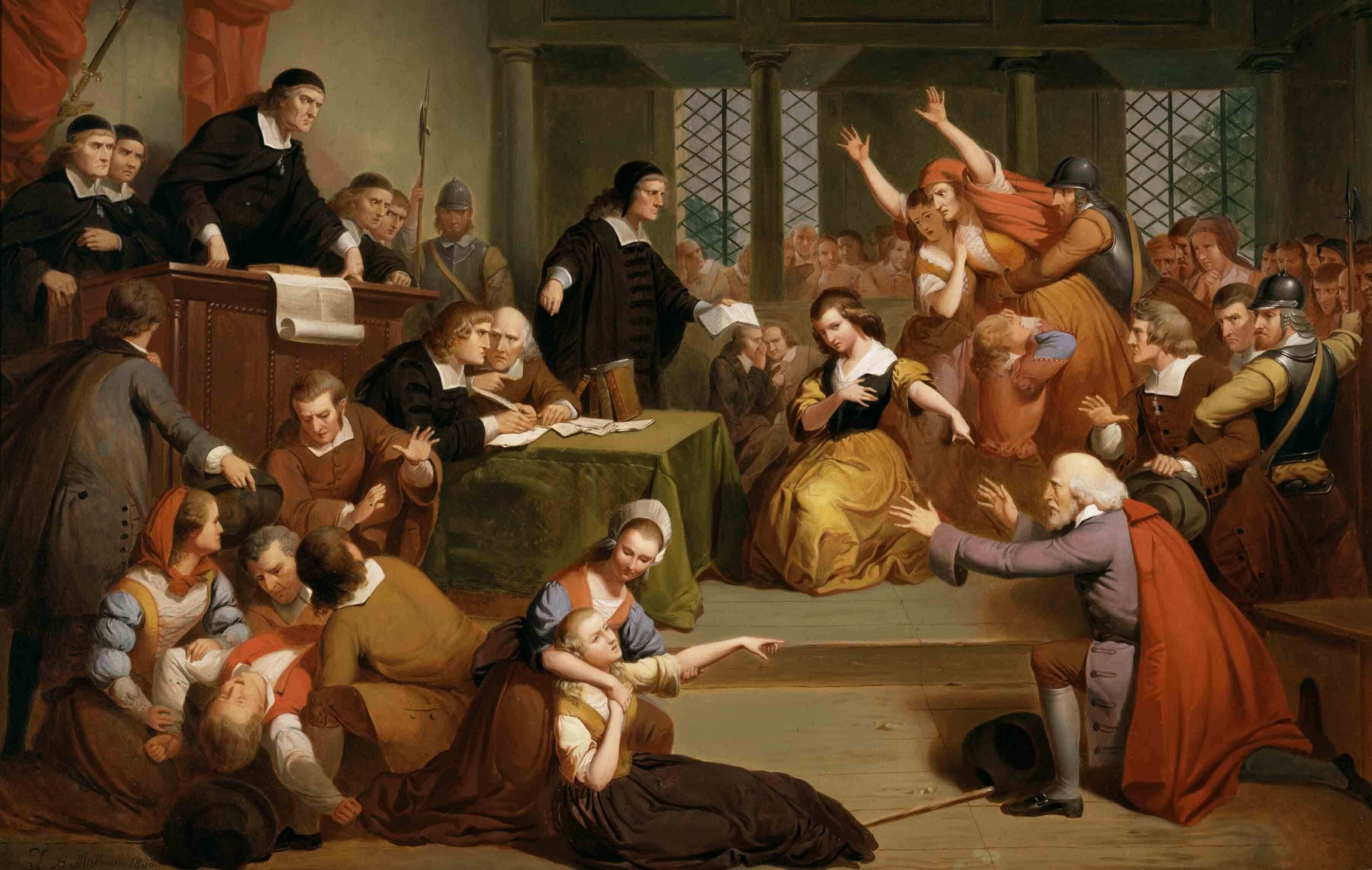
Cotton Mather wrote to one of the judges, John Richards, a member of his congregation, on May 31, 1692,[34][5] voicing his support of the prosecutions, but cautioning him "do not lay more stress on pure spectral evidence than it will bear... It is very certain that the Devils have sometimes represented the Shapes of persons not only innocent, but also very virtuous. Though I believe that the just God then ordinarily provides a way for the speedy vindication of the persons thus abused." [35]
Formal prosecution: The Court of Oyer and Terminer

The Court of Oyer and Terminer convened in Salem Town on June 2, 1692, with William Stoughton, the new Lieutenant Governor, as Chief Magistrate, Thomas Newton as the Crown's Attorney prosecuting the cases, and Stephen Sewall as clerk. Bridget Bishop's case was the first brought to the grand jury, who endorsed all the indictments against her. Bishop was described as not living a puritan lifestyle for she wore black clothing and odd costumes which was against the puritan code. When she was examined before her trial, Bishop was asked about her coat which had been awkwardly “cut or torn in two ways”.[36] This along with her immoral lifestyle accused her of a being a witch. She went to trial the same day and was found guilty. On June 3, the grand jury endorsed indictments against Rebecca Nurse and John Willard, but it is not clear why they did not go to trial immediately as well. Bridget Bishop was executed by hanging on June 10, 1692.

Immediately following this execution, the court adjourned for 20 days (until June 30) while it sought advice from New England's most influential ministers "upon the state of things as they then stood." [37] [38] Their collective response came back dated June 15 and composed by Cotton Mather:
-
- The return of several ministers consulted by his excellency and the honorable council upon the present witchcraft in Salem village.
- 1. The afflicted state of our poor neighbours, that are now suffering by molestations from the invisible world, we apprehend so deplorable, that we think their condition calls for the utmost help of all persons in their several capacities.
- 2. We cannot but, with all thankfulness, acknowledge the success which the merciful God has given unto the sedulous and assiduous endeavours of our honourable rulers, to detect the abominable witchcrafts which have been committed in the country, humbly praying, that the discovery of those mysterious and mischievous wickednesses may be perfected.
- 3. We judge that, in the prosecution of these and all such witchcrafts, there is need of a very critical and exquisite caution, lest by too much credulity for things received only upon the Devil's authority, there be a door opened for a long train of miserable consequences, and Satan get an advantage over us; for we should not be ignorant of his devices.
- 4. As in complaints upon witchcrafts, there may be matters of inquiry which do not amount unto matters of presumption, and there may be matters of presumption which yet may not be matters of conviction, so it is necessary, that all proceedings thereabout be managed with an exceeding tenderness towards those that may be complained of, especially if they have been persons formerly of an unblemished reputation.
- 5. When the first inquiry is made into the circumstances of such as may lie under the just suspicion of witchcrafts, we could wish that there may be admitted as little as is possible of such noise, company and openness as may too hastily expose them that are examined, and that there may no thing be used as a test for the trial of the suspected, the lawfulness whereof may be doubted among the people of God; but that the directions given by such judicious writers as Perkins and Bernard [be consulted in such a case].
- 6. Presumptions whereupon persons may be committed, and, much more, convictions whereupon persons may be condemned as guilty of witchcrafts, ought certainly to be more considerable than barely the accused person's being represented by a specter unto the afflicted; inasmuch as it is an undoubted and notorious thing, that a demon may, by God's permission, appear, even to ill purposes, in the shape of an innocent, yea, and a virtuous man. Nor can we esteem alterations made in the sufferers, by a look or touch of the accused, to be an infallible evidence of guilt, but frequently liable to be abused by the Devil's legerdemains.
- 7. We know not whether some remarkable affronts given to the Devils by our disbelieving those testimonies whose whole force and strength is from them alone, may not put a period unto the progress of the dreadful calamity begun upon us, in the accusations of so many persons, whereof some, we hope, are yet clear from the great transgression laid unto their charge.
- 8. Nevertheless, we cannot but humbly recommend unto the government, the speedy and vigorous prosecution of such as have rendered themselves obnoxious, according to the direction given in the laws of God, and the wholesome statutes of the English nation, for the detection of witchcrafts.
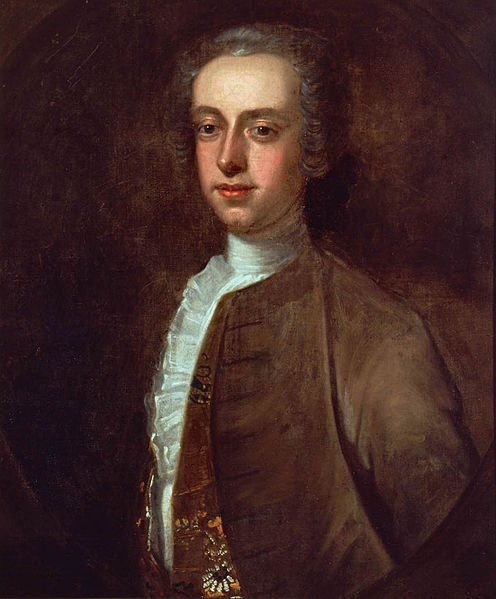
Hutchinson sums the letter, "The two first and the last sections of this advice took away the force of all the others, and the prosecutions went on with more vigor than before." (Reprinting the letter years later in Magnalia, Cotton Mather left out these "two first and the last" sections.) Major Nathaniel Saltonstall Esq. resigned from the court on or about June 16, presumably dissatisfied with the letter and that it had not outright barred the admission of spectral evidence. According to Upham, Saltonsall deserves the credit for "being the only public man of his day who had the sense or courage to condemn the proceedings, at the start." (chapt. VII)

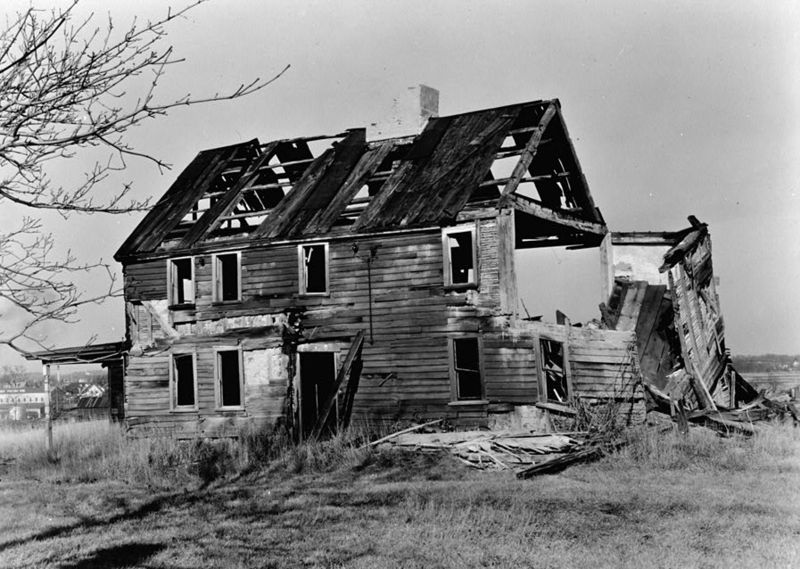
June 30 through early July, grand juries endorsed indictments against Sarah Good, Elizabeth Howe, Susannah Martin, Elizabeth Proctor, John Proctor, Martha Carrier, Sarah Wilds and Dorcas Hoar. Only Sarah Good, Elizabeth Howe, Susannah Martin and Sarah Wildes, along with Rebecca Nurse, went on to trial at this time, where they were found guilty, and all five were executed by hanging on July 19, 1692.

Mid-July, the constable in Andover invited the afflicted girls from Salem Village to visit with his wife to try to determine who was causing her afflictions. Ann Foster, her daughter Mary Lacey Sr., and granddaughter Mary Lacey Jr. all confessed to being witches. Anthony Checkley was appointed by Governor Phips to replace Thomas Newton as the Crown's Attorney when Newton took an appointment in New Hampshire.
In August, grand juries indicted George Burroughs, Mary Eastey, Martha Corey and George Jacobs, Sr., and trial juries convicted Martha Carrier, George Jacobs, Sr., George Burroughs, John Willard, Elizabeth Proctor and John Proctor. Elizabeth Proctor was given a temporary stay of execution because she was pregnant. August 19, 1692, Martha Carrier, George Jacobs Sr., George Burroughs, John Willard and John Proctor were executed.

In September, grand juries indicted eighteen more people. The grand jury failed to indict William Proctor, who was re-arrested on new charges. On September 19, 1692, Giles Corey refused to plead at arraignment, and was subjected to peine forte et dure, a form of torture in which the subject is pressed beneath an increasingly heavy load of stones, in an attempt to make him enter a plea. Four pleaded guilty and eleven others were tried and found guilty.Mr. Burroughs was carried in a Cart with others, through the streets of Salem, to Execution. When he was upon the Ladder, he made a speech for the clearing of his Innocency, with such Solemn and Serious Expressions as were to the Admiration of all present; his Prayer (which he concluded by repeating the Lord’s Prayer) [as witches were not supposed to be able to recite] was so well worded, and uttered with such composedness as such fervency of spirit, as was very Affecting, and drew Tears from many, so that if seemed to some that the spectators would hinder the execution. The accusers said the black Man [Devil] stood and dictated to him. As soon as he was turned off [hung], Mr. Cotton Mather, being mounted upon a Horse, addressed himself to the People, partly to declare that he [Mr. Burroughs] was no ordained Minister, partly to possess the People of his guilt, saying that the devil often had been transformed into the Angel of Light. And this did somewhat appease the People, and the Executions went on; when he [Mr. Burroughs] was cut down, he was dragged by a Halter to a Hole, or Grave, between the Rocks, about two feet deep; his Shirt and Breeches being pulled off, and an old pair of Trousers of one Executed put on his lower parts: he was so put in, together with Willard and Carrier, that one of his Hands, and his Chin, and a Foot of one of them, was left uncovered.—Robert Calef More Wonders of the Invisible World[6]

September 20, Cotton Mather wrote to Stephen Sewall, the clerk of the court: "That I may be the more capable to assist in lifting up a standard against the infernal enemy..." requesting "... a narrative of the evidence given in at the trials of half a dozen, or if you please, a dozen, of the principal witches that have been condemned."

September 22, 1692, eight more were executed, "After Execution Mr. Noyes turning him to the Bodies, said, what a sad thing it is to see Eight Firebrands of Hell hanging there."[7] One of the convicted, Dorcas Hoar, was given a temporary reprieve, with the support of several ministers, to make a confession of being a witch. Aged Mary Bradbury escaped. Abigail Faulkner Sr. was pregnant and given a temporary reprieve (some reports from that era say that Abigail's reprieve later became a stay of charges).

Mather quickly completed his account of the trials Wonders of the Invisible World[8] and it was given to Phips when he returned from the fighting in Maine in early October. Burr says both the Phip's letter and Mather's manuscript "must have gone to London by the same ship" in mid-October [9].
I hereby declare that as soon as I came from fighting ... and understood what danger some of their innocent subjects might be exposed to, if the evidence of the afflicted persons only did prevaile either to the committing or trying any of them, I did before any application was made unto me about it put a stop to the proceedings of the Court and they are now stopt till their Majesties pleasure be known.—Governor Phips, Boston, October 12, 1692

October 29, Judge Sewall writes "the Court of Oyer and Terminer count themselves thereby dismissed... asked whether the Court of Oyer and Terminer should sit, expressing some fear of Inconvenience by its fall, [the] Governour said it must fall." (Sewall's Diary, I. 368.) Governor Phips' wife was among those "called out upon" by the afflicted. Spectral evidence was once again in question. There would be more trials after the new year, but not like before.
The Superior Court of Judicature, 1693
In January 1693, the new Superior Court of Judicature, Court of Assize and General Gaol Delivery convened in Salem, Essex County, again headed by William Stoughton, as Chief Justice, with Anthony Checkley continuing as the Attorney General, and Jonathan Elatson as Clerk of the Court. The first five cases tried in January 1693 were of the five people who had been indicted but not tried in September: Sarah Buckley, Margaret Jacobs, Rebecca Jacobs, Mary Whittredge and Job Tookey. All were found not guilty. Grand juries were held for many of those remaining in jail. Charges were dismissed against many, but sixteen more people were indicted and tried, three of whom were found guilty: Elizabeth Johnson Jr., Sarah Wardwell and Mary Post. When Stoughton wrote the warrants for the execution of these women and the others remaining from the previous court, Governor Phips pardoned them, sparing their lives. In late January/early February, the Court sat again in Charlestown, Middlesex County, and held grand juries and tried five people: Sarah Cole (of Lynn), Lydia Dustin & Sarah Dustin, Mary Taylor and Mary Toothaker. All were found not guilty, but were not released until they paid their jail fees. Lydia Dustin died in jail on March 10, 1693. At the end of April, the Court convened in Boston, Suffolk County, and cleared Capt. John Alden by proclamation, and heard charges against a servant girl, Mary Watkins, for falsely accusing her mistress of witchcraft. In May, the Court convened in Ipswich, Essex County, held a variety of grand juries who dismissed charges against all but five people. Susannah Post, Eunice Frye, Mary Bridges Jr., Mary Barker and William Barker Jr. were all found not guilty at trial, putting an end to the episode.

Legal procedures
Overview
After someone concluded that a loss, illness or death had been caused by witchcraft, the accuser entered a complaint against the alleged witch with the local magistrates.[39]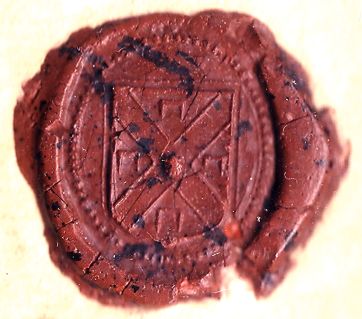
If the complaint was deemed credible, the magistrates had the person arrested[40] and brought in for a public examination, essentially an interrogation, where the magistrates pressed the accused to confess.[41]
If the magistrates at this local level were satisfied that the complaint was well-founded, the prisoner was handed over to be dealt with by a superior court. In 1692, the magistrates opted to wait for the arrival of the new charter and governor, who would establish a Court of Oyer and Terminer to handle these cases.
The next step, at the superior court level, was to summon witnesses before a grand jury.[42]
A person could be indicted on charges of afflicting with witchcraft,[43] or for making an unlawful covenant with the Devil.[44] Once indicted, the defendant went to trial, sometimes on the same day, as in the case of the first person indicted and tried on June 2, Bridget Bishop, who was executed on June 10, 1692.
There were four execution dates, with one person executed on June 10, 1692,[45] five executed on July 19, 1692 (Sarah Good, Rebecca Nurse, Susannah Martin, Elizabeth Howe & Sarah Wildes),[46] another five executed on August 19, 1692 (Martha Carrier, John Willard, George Burroughs, George Jacobs, Sr. and John Proctor), and eight on September 22, 1692 (Mary Eastey, Martha Corey, Ann Pudeator, Samuel Wardwell, Mary Parker, Alice Parker, Wilmot Redd and Margaret Scott). Several others, including Elizabeth (Bassett) Proctor and Abigail Faulkner, were convicted but given temporary reprieves because they were pregnant. Five other women were convicted in 1692, but the sentence was never carried out: Ann Foster (who later died in prison), her daughter Mary Lacy Sr., Abigail Hobbs, Dorcas Hoar and Mary Bradbury.

Giles Corey, an 80-year-old farmer from the southeast end of Salem (called Salem Farms), refused to enter a plea when he came to trial in September. The judges applied an archaic form of punishment called peine forte et dure, in which stones were piled on his chest until he could no longer breathe. After two days of peine fort et dure, Corey died without entering a plea.[47] His refusal to plead has sometimes been explained as a way of preventing his estate from being confiscated by the Crown, but according to historian Chadwick Hansen, much of Corey's property had already been seized, and he had made a will in prison: "His death was a protest ... against the methods of the court".[48] This echoes the perspective of a contemporary critic of the trials, Robert Calef, who claimed, "Giles Corey pleaded not Guilty to his Indictment, but would not put himself upon Tryal by the Jury (they having cleared none upon Tryal) and knowing there would be the same Witnesses against him, rather chose to undergo what Death they would put him to."[49]

Not even in death were the accused witches granted peace or respect. As convicted witches, Rebecca Nurse and Martha Corey had been excommunicated from their churches and none were given proper burial. As soon as the bodies of the accused were cut down from the trees, they were thrown into a shallow grave and the crowd dispersed. Oral history claims that the families of the dead reclaimed their bodies after dark and buried them in unmarked graves on family property. The record books of the time do not mention the deaths of any of those executed.
Spectral evidence

Much, but not all, of the evidence used against the accused was spectral evidence, or the testimony of the afflicted who claimed to see the apparition or the shape of the person who was allegedly afflicting them. The theological dispute that ensued about the use of this evidence centered on whether a person had to give permission to the Devil for his/her shape to be used to afflict. Opponents claimed that the Devil was able to use anyone's shape to afflict people, but the Court contended that the Devil could not use a person's shape without that person's permission; therefore, when the afflicted claimed to see the apparition of a specific person, that was accepted as evidence that the accused had been complicit with the Devil.

Increase Mather and other ministers sent a letter to the Court, "The Return of Several Ministers Consulted," urging the magistrates not to convict on spectral evidence alone (spectral evidence was later ruled inadmissible, which caused a dramatic reduction in the rate of convictions and may have hastened the end of the trials). A copy of this letter was printed in Increase Mather's Cases of Conscience, published in 1693. The publication A Tryal of Witches, was used by the magistrates at Salem, when looking for a precedent in allowing spectral evidence. Finding that no lesser person than the jurist Sir Matthew Hale had permitted this evidence, supported by the eminent philosopher, physician and author Thomas Browne, to be used in the Bury St Edmunds witch trial and the accusations against two Lowestoft women, held in 1662 in Bury St Edmunds, Suffolk, England, they also accepted its validity and the trials proceeded.[50]
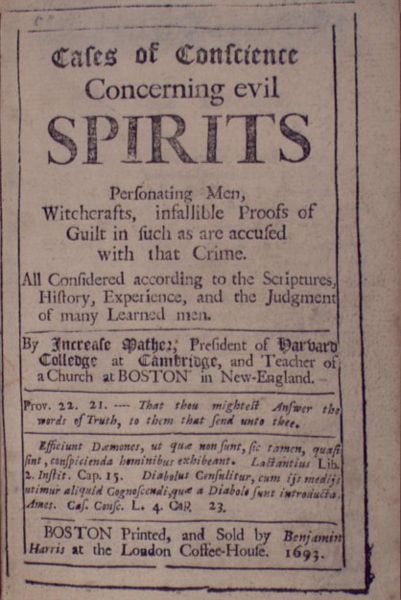
Witch cake
At some point in February 1692, likely between the time when the afflictions began but before specific names were mentioned, a neighbor of Rev. Parris, Mary Sibly (aunt of the afflicted Mary Walcott), instructed John Indian, one of the minister's slaves, to make a witch cake, using traditional English white magic to discover the identity of the witch who was afflicting the girls. The cake, made from rye meal and urine from the afflicted girls, was fed to a dog.
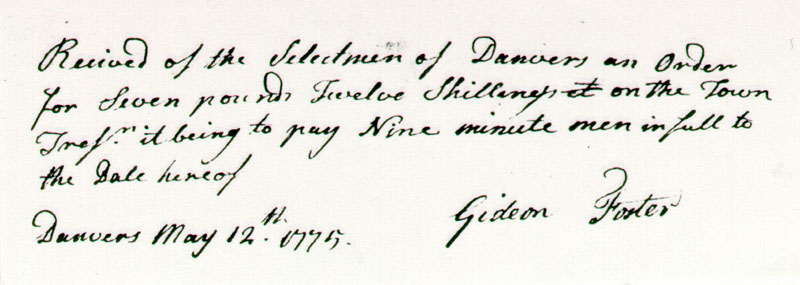
According to the Records of the Salem-Village Church, Parris spoke with Sibly privately on March 25, 1692 about her "grand error" and accepted her "sorrowful confession." During his Sunday sermon on March 27 he addressed his congregation on the subject of the "calamities" that had begun in his own household, but stated "it never brake forth to any considerable light, until diabolical means were used, by the making of a cake by my Indian man, who had his direction from this our sister, Mary Sibly," going on to admonish all against the use of any kind of magic, even white magic, because it was essentially, "going to the Devil for help against the Devil." Mary Sibley publicly acknowledged the error of her actions before the congregation, who voted by a show of hands that they were satisfied with her admission of error.[52]
Other instances appear in the records of the episode that demonstrated a continued belief by members of the community in this effluvia as legitimate evidence, including accounts in two statements against Elizabeth Howe that people had suggested cutting off and burning an ear of two different animals Howe was thought to have afflicted, to prove she was the one who had bewitched them to death.[53]

Traditionally, the allegedly afflicted girls are said to have been entertained by Parris' slave woman, Tituba, who supposedly taught them about voodoo in the kitchen of the parsonage during the winter of 1692, although there is no contemporary evidence to support the story.[54] A variety of secondary sources, starting with Charles W. Upham in the 19th century, typically relate that a circle of the girls, with Tituba's help, tried their hands at fortune telling using the white of an egg and a mirror to create a primitive crystal ball to divine the professions of their future spouses and scared one another when one supposedly saw the shape of a coffin instead. The story is drawn from John Hale's book about the trials,[55] but in his account, only one of the girls, not a group of them, had confessed to him afterwards that she had once tried this. Hale did not mention Tituba as having any part of it, nor when it had occurred. Yet the record of her trial with Sarah Good and Sarah Osborne holds her giving an energetic confession, speaking before the court of "creatures who inhabit the invisible world," and "the dark rituals which bind them together in service of Satan," and implicating both Good and Osborne while asserting that "many other people in the colony were engaged in the devil's conspiracy against the Bay."[56]

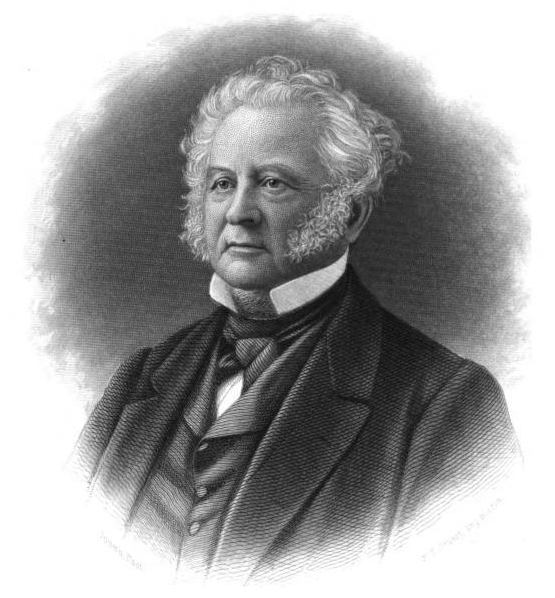
Tituba's race is often cited as Carib-Indian or of African descent, but contemporary sources describe her only as an "Indian." Research by Elaine Breslaw has suggested that she may well have been captured in what is now Venezuela and brought to Barbados, and so may have been an Arawak Indian.[57] Other slightly later descriptions of her, by Gov. Thomas Hutchinson writing his history of the Massachusetts Bay Colony in the 18th century, describe her as a "Spanish Indian."[58] In that day, that typically meant a Native American from the Carolinas/Georgia/Florida.
Touch test
 The most infamous employment of the belief in effluvia – and in
direct opposition to what Parris had advised his own parishioners in
Salem Village – was the touch test used in Andover during
preliminary examinations in September 1692. If the accused witch touched
the victim while the victim was having a fit, and the fit then stopped,
that meant the accused was the person who had afflicted the victim. As
several of those accused later recounted, "we were blindfolded, and our
hands were laid upon the afflicted persons, they being in their fits and
falling into their fits at our coming into their presence, as they
said. Some led us and laid our hands upon them, and then they said they
were well and that we were guilty of afflicting them; whereupon we were
all seized, as prisoners, by a warrant from the justice of the peace and
forthwith carried to Salem"[59]
Rev. John Hale explained how this supposedly worked: "the Witch by the
cast of her eye sends forth a Malefick Venome into the Bewitched to cast
him into a fit, and therefore the touch of the hand doth by sympathy
cause that venome to return into the Body of the Witch again".[60]
The most infamous employment of the belief in effluvia – and in
direct opposition to what Parris had advised his own parishioners in
Salem Village – was the touch test used in Andover during
preliminary examinations in September 1692. If the accused witch touched
the victim while the victim was having a fit, and the fit then stopped,
that meant the accused was the person who had afflicted the victim. As
several of those accused later recounted, "we were blindfolded, and our
hands were laid upon the afflicted persons, they being in their fits and
falling into their fits at our coming into their presence, as they
said. Some led us and laid our hands upon them, and then they said they
were well and that we were guilty of afflicting them; whereupon we were
all seized, as prisoners, by a warrant from the justice of the peace and
forthwith carried to Salem"[59]
Rev. John Hale explained how this supposedly worked: "the Witch by the
cast of her eye sends forth a Malefick Venome into the Bewitched to cast
him into a fit, and therefore the touch of the hand doth by sympathy
cause that venome to return into the Body of the Witch again".[60]Other evidence
Other evidence included the confessions of the accused, the testimony of a person who confessed to being a witch identifying others as witches, the discovery of poppits, books of palmistry and horoscopes, or pots of ointments in the possession or home of the accused, and the existence of so-called witch's teats on the body of the accused. A witch's teat was said to be a mole or blemish somewhere on the body that was insensitive to touch; discovery of such insensitive areas was considered de facto evidence of witchcraft, although in practice the witch's teat was usually insensitive by design, with examiners using secretly dulled needles to claim that the accused could not feel the prick of a pin.[citation needed]Contemporary commentary on the trials
Various accounts and opinions about the proceedings began to appear in print in 1692.Deodat Lawson, a former minister in Salem Village, visited Salem Village in March and April, 1692, and published an account in Boston in 1692 of what he witnessed and heard, called "A Brief and True Narrative of Some Remarkable Passages Relating to Sundry Persons Afflicted by Witchcraft, at Salem Village: Which happened from the Nineteenth of March, to the Fifth of April, 1692".[61]
Rev. William Milbourne, a Baptist minister in Boston, publicly petitioned the General Assembly in early June, 1692, challenging the use of spectral evidence by the Court. Milbourne had to post £200 bond or be arrested for "contriving, writing and publishing the said scandalous Papers".[62]

On June 15, 1692, twelve local ministers—including Increase Mather, Samuel Willard, Cotton Mather—submitted The Return of several Ministers to the Governor and Council in Boston, cautioning the authorities not to rely entirely on the use of spectral evidence, stating, "Presumptions whereupon persons may be Committed, and much more, Convictions whereupon persons may be Condemned as Guilty of Witchcrafts, ought certainly to be more considerable, than barely the Accused Persons being Represented by a Spectre unto the Afflicted".[63]

Sometime in 1692, minister of the Third Church in Boston,[64] Samuel Willard anonymously published a short tract in Philadelphia entitled, "Some Miscellany Observations On our present Debates respecting Witchcrafts, in a Dialogue Between S. & B." The authors were listed as "P.E. and J. A." (Philip English and John Alden), but is generally attributed to Willard. In it, two characters, S (Salem) and B (Boston), discuss the way the proceedings were being conducted, with "B" urging caution about the use of testimony from the afflicted and the confessors, stating, "whatever comes from them is to be suspected; and it is dangerous using or crediting them too far".[65]

Sometime in September 1692, at the request of Governor Phips, Cotton Mather wrote "Wonders of the Invisible World: Being an Account of the Tryals of Several Witches, Lately Executed in New-England," as a defense of the trials, to "help very much flatten that fury which we now so much turn upon one another".[66] It was published in Boston and London in 1692, although dated 1693, with an introductory letter of endorsement by William Stoughton, the Chief Magistrate. The book included accounts of five trials, with much of the material copied directly from the court records supplied to Mather by Stephen Sewall, his friend and Clerk of the Court.[67]

Cotton Mather's father, Increase Mather, published "Cases of Conscience Concerning Evil Spirits," dated October 3, 1692, after the last trials by the Court of Oyer & Terminer, although the title page lists the year of publication as "1693." In it, Mather repeated his caution about the reliance on spectral evidence, stating "It were better that Ten Suspected Witches should escape, than that one Innocent Person should be Condemned".[68] Second and third editions of this book were published in Boston and London in 1693, the third of which also included Lawson's Narrative and the anonymous "A Further Account of the Tryals of the New-England Witches, sent in a Letter from thence, to a Gentleman in London."[69]

A wealthy businessman in Boston and fellow Harvard graduate, Thomas Brattle circulated a letter in manuscript form in October 1692, in which he criticized the methods used by the Court to determine guilt, including the use of the touch test and the testimony of confessors, stating, "they are deluded, imposed upon, and under the influence of some evill spirit; and therefore unfit to be evidences either against themselves, or any one else"[70]
Aftermath and closure

Although the last trial was held in May 1693, public response to the events has continued. In the decades following the trials, the issues primarily had to do with establishing the innocence of the individuals who were convicted and compensating the survivors and families, and in the following centuries, the descendants of those unjustly accused and condemned have sought to honor their memories.
Reversals of attainder and compensation to the survivors and their families
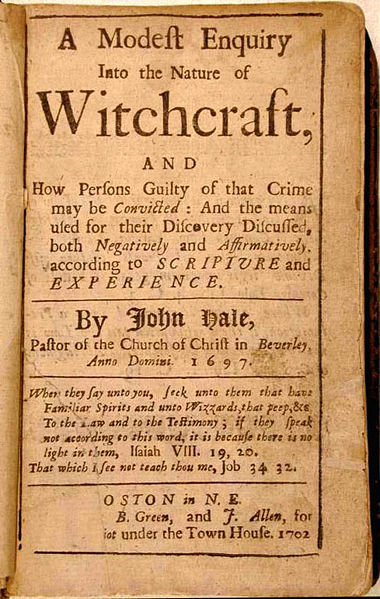
The first hint that public call for justice was not over happened in 1695, when Thomas Maule, a noted Quaker, publicly criticized the handling of the trials by the Puritan leaders in Chapter 29 of his book Truth Held Forth and Maintained, expanding on Increase Mather by stating, "it were better that one hundred Witches should live, than that one person be put to death for a witch, which is not a Witch".[71] For publishing this book, Maule was imprisoned twelve months before he was tried and found not guilty.[72]

From 1693-1697, Robert Calef, a "weaver" and a cloth merchant in Boston, collected correspondence, court records and petitions, and other accounts of the trials, and placed them, for contrast, alongside portions of Cotton Mather's Wonders of the Invisible World. Calef's title: More Wonders of the Invisible World,.[76] He could not get it published in Boston and had to take it to London where it was published in 1700. Scholars of the trials-- Hutchinson, Upham, Burr, and even Poole-- have relied on Calef's compilation of documents. John Hale, a minister in Beverly who was present at many of the proceedings, had completed his book, A Modest Enquiry into the Nature of Witchcraft in 1697, but it wasn't published until 1702, after his death, and perhaps in response to Calef's book. Expressing regret over the actions taken, Hale admitted, "Such was the darkness of that day, the tortures and lamentations of the afflicted, and the power of former presidents, that we walked in the clouds, and could not see our way."[77]
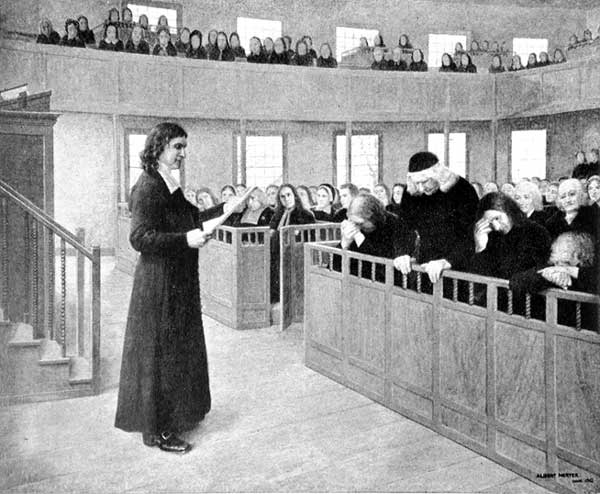
Various petitions were filed between 1700 and 1703 with the Massachusetts government, demanding that the convictions be formally reversed. Those tried and found guilty were considered dead in the eyes of the law, and with convictions still on the books, those not executed were vulnerable to further accusations. The General Court initially reversed the attainder only for those who had filed petitions,[78] only three people who had been convicted but not executed: Abigail Faulkner Sr., Elizabeth Proctor and Sarah Wardwell.[79] In 1703, another petition was filed,[80] requesting a more equitable settlement for those wrongly accused, but it wasn't until 1709, when the General Court received a further request, that it took action on this proposal. In May 1709, 22 people who had been convicted of witchcraft, or whose relatives had been convicted of witchcraft, presented the government with a petition in which they demanded both a reversal of attainder and compensation for financial losses.[81]

Repentance was evident within the Salem Village church. Rev. Joseph Green and the members of the church voted on February 14, 1703, after nearly two months of consideration, to reverse the excommunication of Martha Corey.[82] On August 25, 1706, when Ann Putnam Jr., one of the most active accusers, joined the Salem Village church, she publicly asked forgiveness. She claimed that she had not acted out of malice, but was being deluded by Satan into denouncing innocent people, and mentioned Rebecca Nurse in particular,[83] and was accepted for full membership.
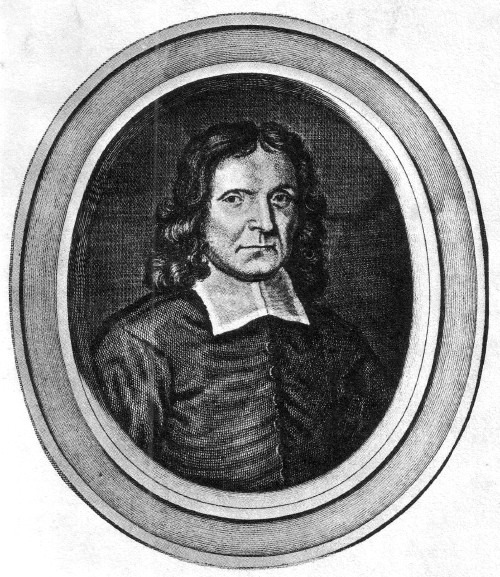
On October 17, 1711, the General Court passed a bill reversing the judgment against the 22 people listed in the 1709 petition (there were seven additional people who had been convicted but had not signed the petition, but there was no reversal of attainder for them). Two months later, on December 17, 1711, Governor Joseph Dudley also authorized monetary compensation to the 22 people in the 1709 petition. The amount of 578 pounds 12 shillings was authorized to be divided among the survivors and relatives of those accused, and most of the accounts were settled within a year,[84] but Phillip English's extensive claims weren't settled until 1718.[85]

Finally, on March 6, 1712, Rev. Nicholas Noyes, and members of the Salem church reversed Noyes' earlier excommunications of their former members, Rebecca Nurse and Giles Corey.[86]
Memorials by descendants
Rebecca Nurse's descendants erected an obelisk-shaped granite memorial in her memory in 1885 on the grounds of the Nurse Homestead in Danvers, with an inscription from Whittier. In 1892 an additional monument was erected in honor of 40 neighbors who signed a petition in support of Nurse.[87]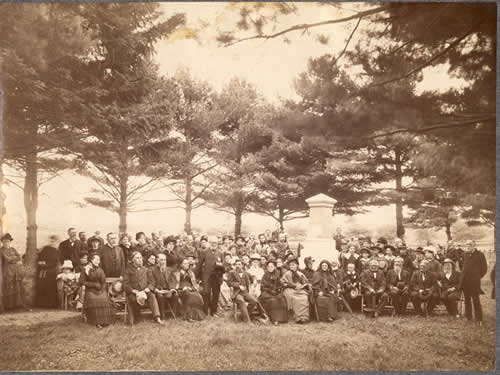
Not all the condemned had been exonerated in the early 18th century, and so in 1957, descendants of the six people who had been wrongly convicted and executed but who had not been included in the bill for a reversal of attainder in 1711, or added to it in 1712, demanded that the General Court formally clear the names of their ancestral family members. An act was passed pronouncing the innocence of those accused, although it listed only Ann Pudeator by name. The others were listed only as "certain other persons," phrasing which failed specifically to name Bridget Bishop, Susannah Martin, Alice Parker, Wilmot Redd and Margaret Scott.[88]
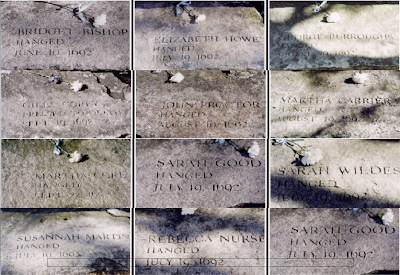
Trials-related family-history groups offer places where descendants can memorialize their ancestors while sharing ideas and information about their research. The Associated Daughters of Early American Witches was founded in 1987 in California. It invites members who are women and able to prove descent from an ancestor who was accused of witchcraft including those at the Salem trials.[89] Bloodlines of Salem was founded in 2007 in Utah. It welcomes members who are able to prove descent from a trials participant or who choose simply to support the group.


The 300th anniversary of the trials was marked in Salem and Danvers by a variety of events in 1992. A memorial park was dedicated in Salem with a stone bench for each of those executed in 1692. Speakers at the ceremony in August included Arthur Miller and Nobel Laureate Elie Wiesel.[90] Danvers erected its own new memorial,[91] and reinterred bones unearthed in the 1950s, assumed to be those of George Jacobs, Sr., in a new resting place at the Rebecca Nurse Homestead.[87]

In 1992, The Danvers Tercentennial Committee also persuaded the Massachusetts House of Representatives to issue a resolution honoring those who had died. After much convincing and hard work by Salem school teacher Paula Keene, Representatives J. Michael Ruane and Paul Tirone and others, the names of all those not previously listed were added to this resolution. When it was finally signed on October 31, 2001, by Governor Jane Swift, more than 300 years later, all were finally proclaimed innocent.[92]

Taken from: http://en.wikipedia.org/wiki/Salem_witch_trials [19.08.2013]

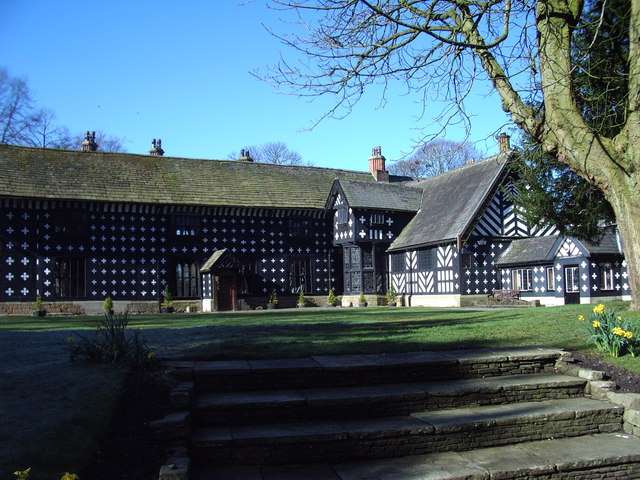
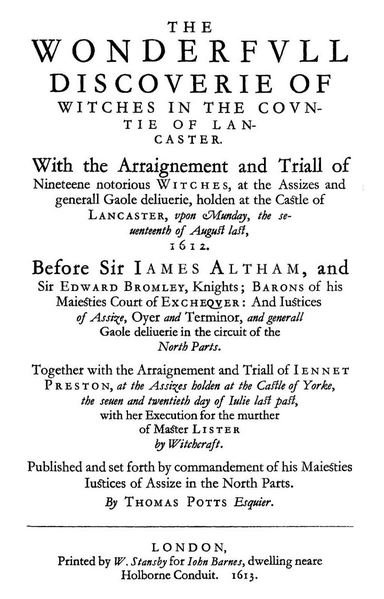

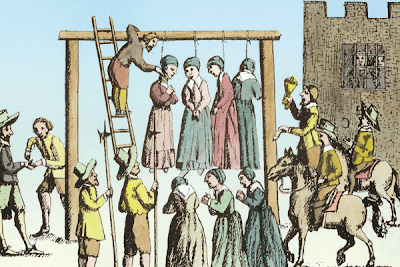

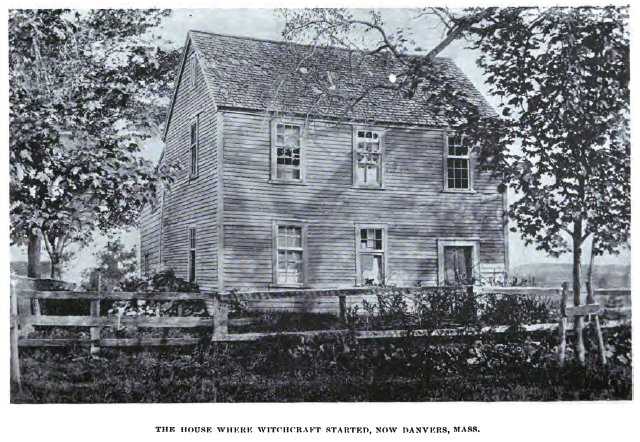

No comments:
Post a Comment